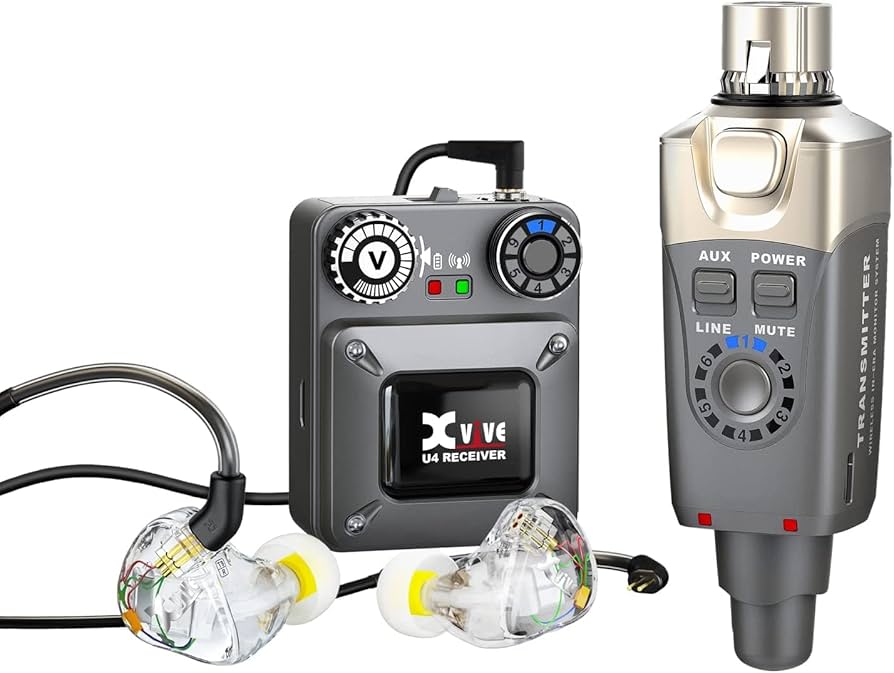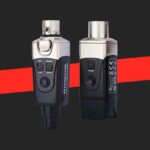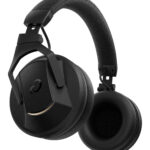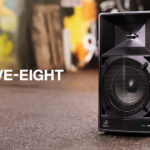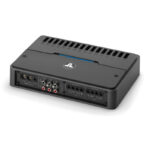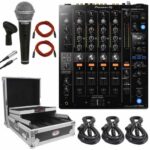Editorial review of Xvive’s U4 wireless system and T9 in-ear monitors for musicians and live performers. Candid insights into wireless audio performance, fit, reliability, and value.
Xvive U4 Wireless & T9 In-Ear Monitors Review: Next-Level Stage Freedom?
Introduction
Wireless monitoring is a must for gigging musicians seeking both mobility and the ability to hear themselves precisely on stage. The Xvive U4 wireless system, paired with T9 in-ear monitors, aims to deliver that capability in a robust package suitable for both studio and live performance. How does this combination stack up for demanding users? This editorial review provides a detailed look at setup, real-world audio performance, and practical advantages.
Unboxing and Hardware Overview
The Xvive U4 transmitter features an XLR input (with included quarter-inch adapter) for use with live mixers or interfaces, a power switch, and a six-channel selector. Its compact form can be a tight fit on crowded stages; a patch cable may be needed for some rigs.
The receiver belt pack is solid and confidence-inspiring, with a durable clip, a power switch with a positive lock, a volume dial that resists accidental bumps, and a channel selector. Overall, construction prioritizes reliability and ruggedness under live performance conditions.
T9 in-ear monitors arrive with standard two-pin detachable cables, multiple silicone and foam ear tips, a cleaning brush, adapter, and a hard storage case—providing adaptability and protection for travel.
Audio Quality and Wireless Performance
U4 System — Signal Integrity
Critical audio sweeps and loopback tests demonstrate the U4 wireless system delivers virtually lossless transmission (20Hz–20kHz). Side-by-side measurements of direct and U4-mediated signals reveal minimal, if any, coloration—ensuring performers hear their mixes as intended without delay or sonic compromise.
The system supports up to six channels, allowing complex setups with multiple transmitters and receivers. Battery life is rated at around five hours, with quick two-hour recharges—sufficient for most live sets, though a full day in the studio may require power cycling or breaks.
Stage and Environment Testing
Rigorous field testing (including high-interference spaces like shopping malls) reveals the U4 maintains stable signal quality even in challenging wireless environments. This inspires confidence for high-stakes performance where dropouts can’t be risked.
In-Ear Monitoring: T9 Sound Quality
The T9 IEMs feature responsive, musical tuning: bass is accurate and present, while mids and highs are shaped to ensure vital cues and details are not lost in the mix. Measurements show a small dip near 2kHz, a peak between 3–8kHz, and gentle high-frequency roll-off—resulting in a sound signature that cuts through stage noise without fatiguing the ear.
With a range of tips included, comfort is excellent for extended wear. The short cable is intentionally sized for use with a belt pack and includes a cinch for securing behind the neck.
Build, Fit and Use Cases
Both the U4 and T9 modules are constructed to withstand real-world abuse. The U4’s controls are intentionally firm, preventing stage accidents. The T9s, with their detachable cable and customizable fit, pair comfort and durability to meet the demands of live musicians and engineers.
Pros and Cons
Pros:
- Clean, near-transparent wireless audio
- Sturdy, road-ready build quality
- Multiple channels for flexible group setups
- Ergonomic T9 fit and customizable comfort
Cons:
- Receiver form factor may require adapters in tight venues
- Five-hour battery life could fall short for all-day recording sessions
Final Verdict
The Xvive U4 and T9 in-ear monitors offer an exceptional wireless monitoring experience at a price well-justified by build quality and signal fidelity. For musicians seeking reliable, portable, and customizable stage sound—with zero wires to hold them back—this combo stands as a compelling choice.


